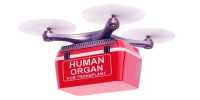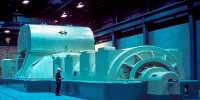Researchers have created a plant that can generate carbon-neutral liquid fuels from sunlight and air. The next step will be to commercialize this technology and achieve competitiveness. Researchers have now described how this novel solar reactor works, as well as a policy framework that would provide incentives to increase production of ‘solar kerosene.’
In a first-of-its-kind rooftop refinery, Swiss researchers converted sunlight and air into fuel. They estimate that larger versions of their solar plant, covering an area slightly larger than Switzerland, could meet the global demand for aviation fuel.
‘Our goal is to produce carbon-neutral fuels for transportation, particularly the aviation sector, which is perhaps the most difficult to decarbonize,’ says ETH Zurich team leader Aldo Steinfeld.
ETH Zurich scientists have created a plant that can generate carbon-neutral liquid fuels from sunlight and air. The next step will be to commercialize this technology and achieve competitiveness. Researchers from Zurich and Potsdam describe how this novel solar reactor works and outline a policy framework that would provide incentives to expand the production of “solar kerosene” in a paper published in the journal Nature.
Our goal is to produce carbon-neutral fuels for transportation, particularly the aviation sector, which is perhaps the most difficult to decarbonize.
Aldo Steinfeld
Carbon-neutral fuels are critical for ensuring the sustainability of aviation and maritime transportation. The Zurich plant can be used to produce synthetic liquid fuels that emit the same amount of CO2 during combustion as was previously extracted from the air for their production. CO2 and water are extracted directly from the atmosphere and separated using solar energy. This process produces syngas, which is a mixture of hydrogen and carbon monoxide that is then converted into kerosene, methanol, or other hydrocarbons.
Over the last two years, a team of researchers led by Aldo Steinfeld, Professor of Renewable Energy Sources at ETH Zurich, has been operating a mini solar refinery on the roof of ETH’s Machine Laboratory building in Zurich. “The technical feasibility of the entire thermochemical process for converting sunlight and ambient air into drop-in fuels is successfully demonstrated by this plant. Under real-world solar conditions, the system operates reliably and provides a unique platform for future research and development “Steinfeld explains. The technology is now mature enough to be used in industrial applications.
“Under real-world solar conditions, the system operates reliably and provides a unique platform for future research and development.”
According to Steinfeld, the technology is now “mature” enough to be used in the real world. However, funding will be required to get there, especially since the carbon-neutral fuel would be more expensive to produce than regular, polluting kerosene. The system is part of a global effort to reduce carbon dioxide emissions caused by flying and shipping (currently 8 percent).

Desert offers ideal conditions
Analyses of the entire process show that the fuel would cost between 1.20 and 2 euros per liter if produced on a large scale. Desert regions with abundant solar resources are ideal for production. “Unlike biofuels, whose potential is limited due to agricultural land scarcity, this technology allows us to meet global demand for jet fuel while using less than 1% of the world’s arid land and would not compete with food or livestock feed production,” explains Johan Lilliestam, a research group leader at the Institute for Advanced Sustainability Studies (IASS Potsdam) and professor of energy policy at the University of Potsdam. If the materials used to construct the manufacturing facilities, such as glass and steel, are produced using renewable energy and carbon-neutral methods, emissions can be reduced to near zero.
Supportive policies needed
However, due to the high initial investment costs, solar fuels will require political support to enter the market. “Existing EU support instruments, such as emissions trading and offsetting, are insufficient to stimulate market demand for solar fuels. As a result, we propose implementing a European technology-specific quota system for aviation fuel. This would necessitate airlines obtaining a certain percentage of their fuel from solar sources “Lilliestam explains.
The study’s authors recommend a 0.1 percent market share in the early stages of market adoption when the price of “solar kerosene” will be high and production capacity will be limited. This would have little effect on flight costs, but it would encourage the development of manufacturing facilities and set in motion a learning curve that could lead to technological advancements and lower prices. The quota could then be gradually increased until solar kerosene achieves market penetration without the need for additional support measures.














